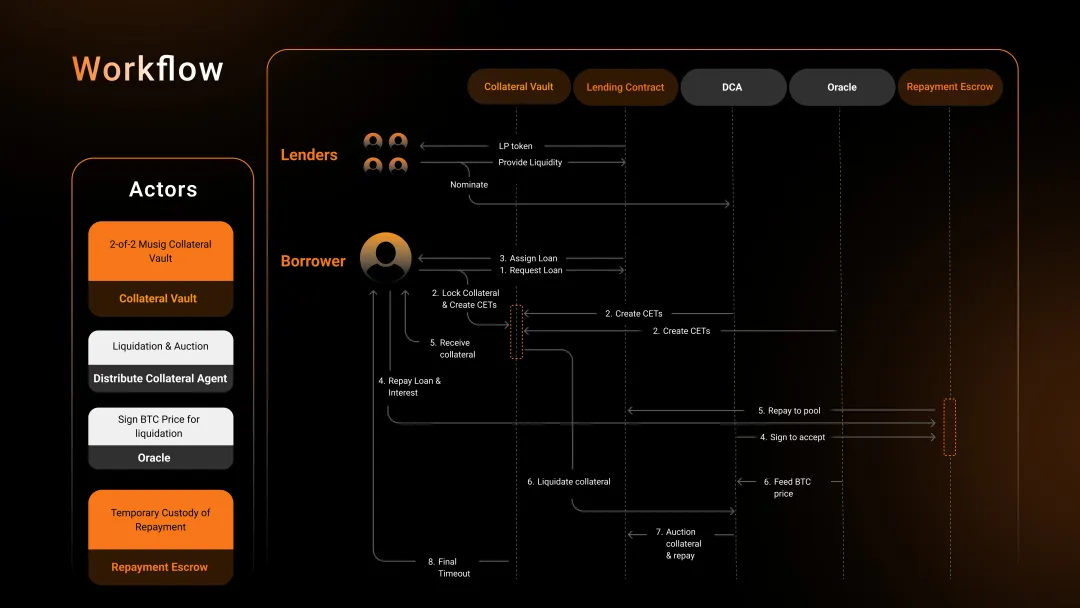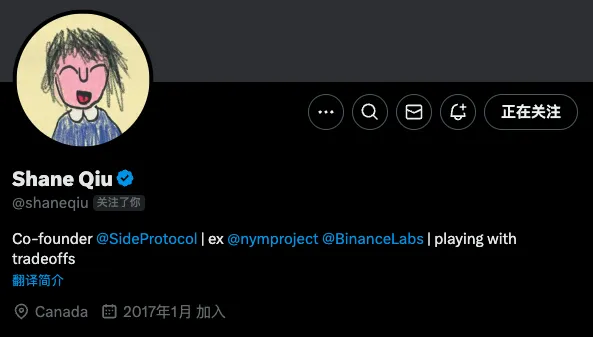The Side Protocol, an expansion protocol for the Bitcoin ecosystem, has released its white paper v1, which will introduce the first on-chain bank for Bitcoin, focusing on native lending and providing comprehensive decentralized financial services.
Author: RunesCC

The Side Protocol, an expansion protocol for the Bitcoin ecosystem, has released its white paper v1, which will introduce the first on-chain bank for Bitcoin, focusing on native lending and providing comprehensive decentralized financial services.
What is Side?
According to the white paper, the Side Protocol is the first on-chain decentralized banking system tailored for Bitcoin, centered around native lending services and offering diversified financial services. Side utilizes native Bitcoin technology to implement a non-custodial Bitcoin liquidity lending protocol and promotes the development of more ecological financial products through sidechain infrastructure.
What is Side's vision?
According to an earlier interview with Dave Hrycyszyn, co-founder of Side Protocol: “If Bitcoin's goal is to replace the status of fiat currency and gold, then the vision of Side Protocol is to play the role of a traditional bank in the world of Bitcoin.”
In the traditional financial system, the most important institution is the bank, and what is the core business of a bank? It is lending, with other financial services revolving around lending. Even in Web3, the largest DeFi protocols (like Aave) are primarily related to lending.
As Dave mentioned, if Bitcoin corresponds to electronic cash or gold, then a massive lending market around Bitcoin is bound to exist.
Currently, the problem in the industry is that no protocol provides native lending services for Bitcoin like a bank; all products related to Bitcoin involve users relinquishing control of their assets, such as WBTC or cross-chain bridges. Even many current Bitcoin layer two protocols are based on centralized cross-chain bridge solutions.
The Side Protocol aims to safely release Bitcoin's liquidity and capital efficiency through native Bitcoin technology, making liquidity lending protocols based on liquidity pools possible.
More importantly, the Side Protocol is not just positioned as a lending protocol; it also provides developers with Bitcoin expansion infrastructure, Side Chain, and a rich set of ecological development tools to support the development of various application products. If the project develops smoothly, a large number of ecological projects are expected to emerge in the future.
Main protocols and applications of Side
The core product of Side Protocol, Side Finance, is a native liquidity lending protocol for Bitcoin (not P2P), and Discreet Log Contracts (DLCs) are the core of the Side Finance infrastructure. It is a Bitcoin smart contract framework based on oracles. DLC allows conditional payments based on off-chain events without the need for third-party custody of funds. DLC uses cryptographic technologies such as multi-signature transactions, Hash Time-Locked Contracts (HTLCs), Schnorr signatures, and Adaptor signatures to ensure user rights while achieving security and non-custodial nature.

In the lending process, DLC locks collateral with an initial 2-of-2 multi-signature, generating pre-signed transactions (CETs) based on the event outcome. When the oracle reveals the liquidation price, the DCA (Distributed Collateral Agent, a component jointly holding the 2-of-2 multi-signature with the user) can spend that UTXO to conduct a liquidation discount auction for the collateral, allowing external bidders to repay the liquidity pool. Thus, Side achieves non-custodial lending with BTC as collateral, meaning that except for liquidation scenarios, any other misuse of collateral requires the user's consent.
It is worth mentioning that before Side Finance was proposed, most Bitcoin lending based on DLCs was peer-to-peer, meaning it required matching borrowers and sellers, which does not align with the common automated operation model of DeFi. Pool-based lending protocols will unlock more DeFi composability.
Additionally, the Side Chain is an important component of the Side Protocol ecosystem and is the core of Side Finance's liquidity aggregation.
The Side Chain is developed based on the Cosmos underlying technology using the high-performance CometBFT consensus engine, supporting fast transaction confirmations and high throughput, making it very suitable for applications with high confirmation speed requirements. Smart contracts run in the Wasm virtual machine and are written in Rust, offering excellent performance and security. The memory safety of Rust and the compatibility of Wasm significantly reduce the risks of common attacks like re-entrancy that are prevalent in Ethereum smart contracts.
From a user experience perspective, the Side Chain is fully compatible with Bitcoin addresses: users can use native formats such as Taproot and Native Segwit without changing the address format, and it supports direct signing operations from Bitcoin wallets (like Unisat and OKX), providing a better user experience. Compared to market solutions based on EVM for Bitcoin expansion (which use 0x addresses and EVM wallets), the Side Chain offers significant convenience.
Moreover, the Side Chain also has a built-in cross-chain bridge module, Side Bridge, providing cross-chain services for assets like BTC and Runes for users with higher trust preferences. Coupled with native DEX and other DeFi services provided by the Side Chain, it lays the foundation for the on-chain DeFi market after the meme explosion of Runes in the future.
Finally, in the project's plans, the Side Chain will play the role of a modular settlement layer for Bitcoin in the future, supporting one-click deployment of various Rollups and connecting to other blockchain ecosystems through interoperable protocols like IBC, providing rich asset liquidity, including native assets like USDC and USDT.
At the application level, the team has developed ecological tools such as Side Station (browser) and Side Wallet (dual-chain wallet for Bitcoin and Side Chain) to provide users with a smooth product interaction experience.
Created by Chainspace gang members
The team's background is quite impressive, with core members coming from well-known Web2 and Web3 companies like Meta, Binance, and Google. Co-founders Dave Hrycyszyn and Shane Qiu have a deep professional background in distributed systems, blockchain scalability, token economics design, and DeFi products.


The two have successfully founded, developed, and exited multiple companies, including Chainspace and Nym. Chainspace was acquired by Facebook and became part of the Libra project, while Nym raised over $50 million from institutions like a16z, Polychain, and Binance during its development. In the currently disclosed funding, support has already been received from institutions like Hashkey and Symbolic Capital.
Genesis Airdrop
In the Bitcoin ecosystem, there are very few teams focused on native application development, and the Side Protocol is the first project to propose a liquidity lending protocol, aiming to become a position similar to Aave in the Ethereum ecosystem, and even has the potential to surpass it.
The team is also an OG developer of the Cosmos faction, mastering the underlying technology of blockchain and cryptographic engineering. In the future, it is expected to shine not only in the revenue from lending protocols but also to thrive in ecological applications.
The Side Protocol has completed multiple rounds of testnets, and the mainnet is expected to launch soon. Finally, it is highly recommended to follow the official X account, as the genesis airdrop is about to begin, bringing substantial benefits to the vast user base of the Bitcoin ecosystem.
Official X account
https://x.com/SideProtocol
Disclaimer: This article is for reference only and should not be used as legal, tax, investment, financial, or any other advice, and does not represent the position of RunesCC.
免责声明:本文章仅代表作者个人观点,不代表本平台的立场和观点。本文章仅供信息分享,不构成对任何人的任何投资建议。用户与作者之间的任何争议,与本平台无关。如网页中刊载的文章或图片涉及侵权,请提供相关的权利证明和身份证明发送邮件到support@aicoin.com,本平台相关工作人员将会进行核查。




